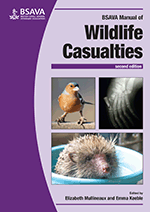
Full text loading...

Over the past decade, the number of wild deer in the UK has doubled to an estimated 2 million individuals, more than at any time in the last thousand years. Consequently, deer casualties, and the incidence of infectious diseases, are increasing. Common reasons for presentation to a veterinary surgeon include road traffic accidents, abandoned young and animals caught in fencing. This chapter covers: ecology and biology; anatomy and physiology; capture, handling and transportation; clinical assessment; first aid and hospitalization; anaesthesia and analgesia; specific conditions; therapeutics; husbandry; rearing of young deer; rehabilitation and release; and legal considerations.
Deer, Page 1 of 1
< Previous page | Next page > /docserver/preview/fulltext/10.22233/9781910443316/9781910443316.22-1.gif

Full text loading...















